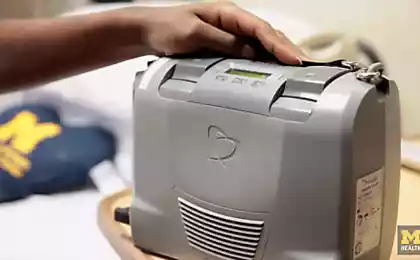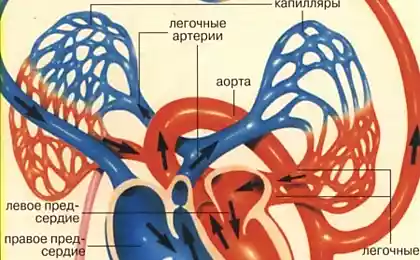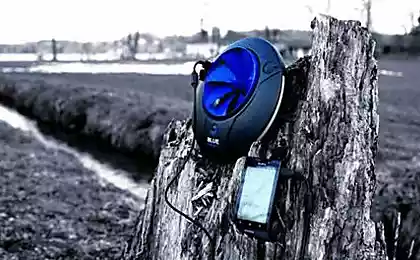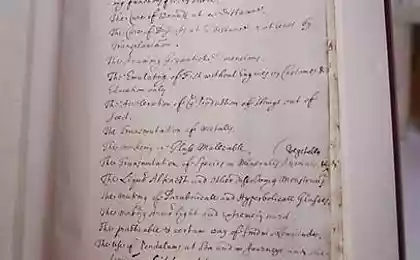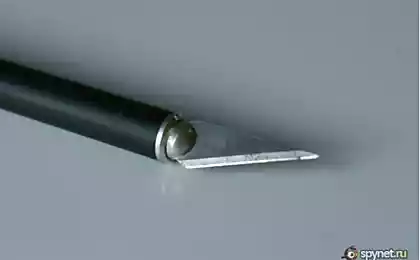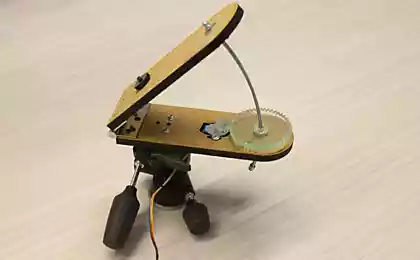543
25-year-old more than a year lived with an artificial heart in a backpack
Artificial Heart SynCardia with a portable set of batteries tested hundreds patsientov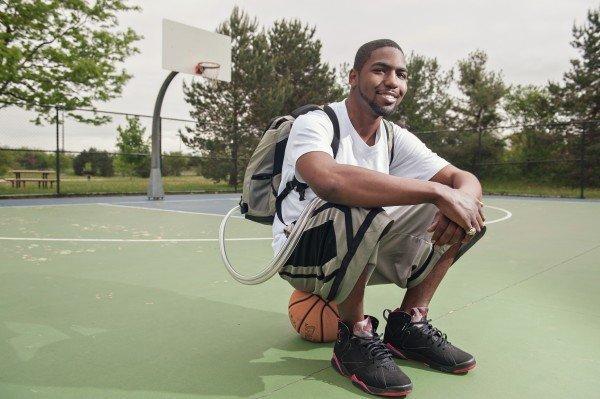
Get the organ for transplant is very difficult. Even the president, if necessary, will have to wait a donor in the order queue (among patients with a priority number 1), what can I say about ordinary citizens. To date, over 121 000 patients are in the US waiting list. On average, every day 22 people die, and not waiting for an organ transplant.
Fortunately, science is not in place, so that you can reduce the mortality rate of patients right now. In the US, bred into operation a new technology that can significantly extend the waiting time for people without heart.
Innovative technologies have already checked in. For example, an American patient Larkin Stan (Stan Larkin), who is now 25 years old, lived without their own heart 17 months, and now all the same wait queue for transplantation.
At Stan Larkin and his older brother was diagnosed with hereditary cardiomyopathy few years ago. Cardiomyopathy - a disease of the myocardium, in which the heart muscle is structurally and functionally altered in the absence of coronary artery disease, hypertension and valvular lesions. Hereditary hypertrophic cardiomyopathy results from mutations in one of the four genes encoding cardiac proteins: Beta myosin heavy chain gene (on chromosome 14); cardiac Troponin T (on chromosome 1); tropomyosin alpha (on chromosome 15) or miozinsvyazyvayuschego protein C (chromosome 11).
In heart failure, cardiomyopathy, slowly but inevitably progresses, so that the survival of patients is low. The only hope - to heart transplantation
. In December 2014 the heart Stan still refused, and the doctors decided to remove it, so that the man is the first patient in the state of Michigan, which established SynCardia Freedom Portable Driver - shestikilogrammovoe portable device that with the help of pumps and compressed air pumps blood through the arteries, replacing the real heart. Testing of this device are from 2010 quite successfully, in 2012, artificial heart SynCardia Freedom Portable Driver awarded the Medical Design Excellence Award in the competition in the category of medical technologies resuscitation and emergency care.
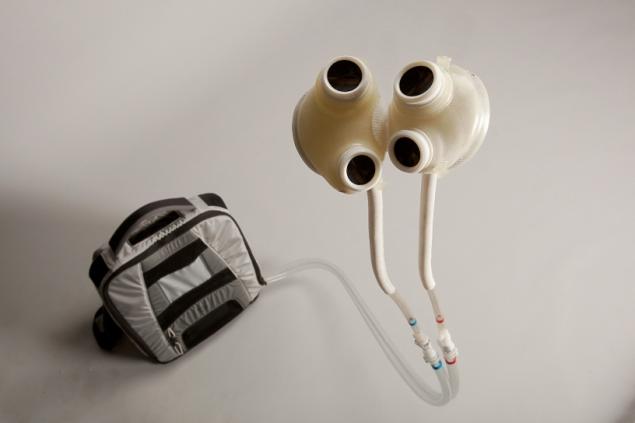
A device with a portable battery is intended for use in the event of complete failure of the heart muscle. SynCardia Freedom Portable Driver was the first in the world this kind of device: a fully portable artificial heart, which can be freely to carry in a backpack. Other portable devices, such as implantable difibrillyatory help only in case of partial failure of the heart, and SynCardia device completely replaces the natural organ. Before its invention, an artificial heart was a stationary unit, so that the patient was confined to bed.
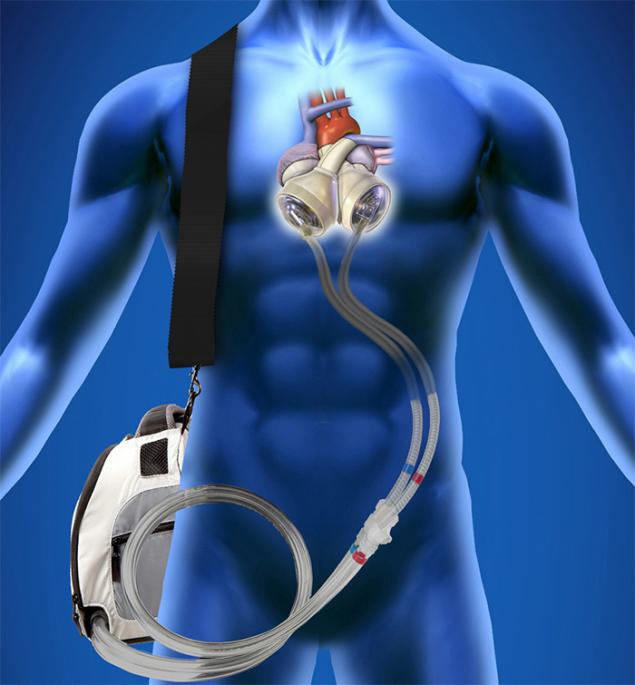
Stan Larkin lived with an artificial heart 555 days. The absolute record for a patient with a fully artificial heart SynCardia Total Artificial Heart is 1374 days. Approximately one third of such a device is carried out over a year, and some - according to two years and longer. Among foreign patients for more than two years, an artificial heart is used 47% in the US - 21% (probably in the United States of all transplant moves faster)
. Artificial Heart SynCardia Heart weighs 160 grams (half the weight of natural) and cost $ 124,800, plus the servicing of portable kit in a backpack.
Brother Larkin also put an artificial heart in 2015, and a suitable donor could be found in just a few weeks. But Stan had to go with a backpack almost half a year. The autonomy of the device is significantly limited: to constantly go to the hospital, but in real life, not every activity is allowed. The patient was forbidden to excessively load the cardiovascular system, for example, could not take their daughters in his arms. But to the surprise of doctors, Stan was able to play basketball.
"Both of them were very seriously ill when we first visited them in the intensive care unit, - says Jonathan Haft (Jonathan Haft), Associate Professor, Department of Surgery, University of Michigan heart, which conducted operations both brothers. - We wanted to implant their new organs, but we understand that we have little time. They had some unique anatomical features that
complicated procedure. " In the end, May 9, 2016 Stan Larkin still had surgery and received a transplant now living heart.
Sound artificial heart
Who knows, maybe in the future artificial heart will become more autonomous and more reliable than the present. Diseases of the cardiovascular system - the main cause of mortality in the world, according to WHO statistics, so that the installation of an artificial heart could save millions of lives
. Source: geektimes.ru/post/276992/

Get the organ for transplant is very difficult. Even the president, if necessary, will have to wait a donor in the order queue (among patients with a priority number 1), what can I say about ordinary citizens. To date, over 121 000 patients are in the US waiting list. On average, every day 22 people die, and not waiting for an organ transplant.
Fortunately, science is not in place, so that you can reduce the mortality rate of patients right now. In the US, bred into operation a new technology that can significantly extend the waiting time for people without heart.
Innovative technologies have already checked in. For example, an American patient Larkin Stan (Stan Larkin), who is now 25 years old, lived without their own heart 17 months, and now all the same wait queue for transplantation.
At Stan Larkin and his older brother was diagnosed with hereditary cardiomyopathy few years ago. Cardiomyopathy - a disease of the myocardium, in which the heart muscle is structurally and functionally altered in the absence of coronary artery disease, hypertension and valvular lesions. Hereditary hypertrophic cardiomyopathy results from mutations in one of the four genes encoding cardiac proteins: Beta myosin heavy chain gene (on chromosome 14); cardiac Troponin T (on chromosome 1); tropomyosin alpha (on chromosome 15) or miozinsvyazyvayuschego protein C (chromosome 11).
In heart failure, cardiomyopathy, slowly but inevitably progresses, so that the survival of patients is low. The only hope - to heart transplantation
. In December 2014 the heart Stan still refused, and the doctors decided to remove it, so that the man is the first patient in the state of Michigan, which established SynCardia Freedom Portable Driver - shestikilogrammovoe portable device that with the help of pumps and compressed air pumps blood through the arteries, replacing the real heart. Testing of this device are from 2010 quite successfully, in 2012, artificial heart SynCardia Freedom Portable Driver awarded the Medical Design Excellence Award in the competition in the category of medical technologies resuscitation and emergency care.

A device with a portable battery is intended for use in the event of complete failure of the heart muscle. SynCardia Freedom Portable Driver was the first in the world this kind of device: a fully portable artificial heart, which can be freely to carry in a backpack. Other portable devices, such as implantable difibrillyatory help only in case of partial failure of the heart, and SynCardia device completely replaces the natural organ. Before its invention, an artificial heart was a stationary unit, so that the patient was confined to bed.

Stan Larkin lived with an artificial heart 555 days. The absolute record for a patient with a fully artificial heart SynCardia Total Artificial Heart is 1374 days. Approximately one third of such a device is carried out over a year, and some - according to two years and longer. Among foreign patients for more than two years, an artificial heart is used 47% in the US - 21% (probably in the United States of all transplant moves faster)
. Artificial Heart SynCardia Heart weighs 160 grams (half the weight of natural) and cost $ 124,800, plus the servicing of portable kit in a backpack.
Brother Larkin also put an artificial heart in 2015, and a suitable donor could be found in just a few weeks. But Stan had to go with a backpack almost half a year. The autonomy of the device is significantly limited: to constantly go to the hospital, but in real life, not every activity is allowed. The patient was forbidden to excessively load the cardiovascular system, for example, could not take their daughters in his arms. But to the surprise of doctors, Stan was able to play basketball.
"Both of them were very seriously ill when we first visited them in the intensive care unit, - says Jonathan Haft (Jonathan Haft), Associate Professor, Department of Surgery, University of Michigan heart, which conducted operations both brothers. - We wanted to implant their new organs, but we understand that we have little time. They had some unique anatomical features that
complicated procedure. " In the end, May 9, 2016 Stan Larkin still had surgery and received a transplant now living heart.
Sound artificial heart
Who knows, maybe in the future artificial heart will become more autonomous and more reliable than the present. Diseases of the cardiovascular system - the main cause of mortality in the world, according to WHO statistics, so that the installation of an artificial heart could save millions of lives
. Source: geektimes.ru/post/276992/
Modern nano-sized vacuum tubes can become an alternative to silicon transistors
8.06. Dust, germs and gesheft


